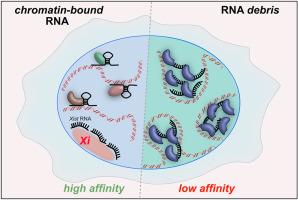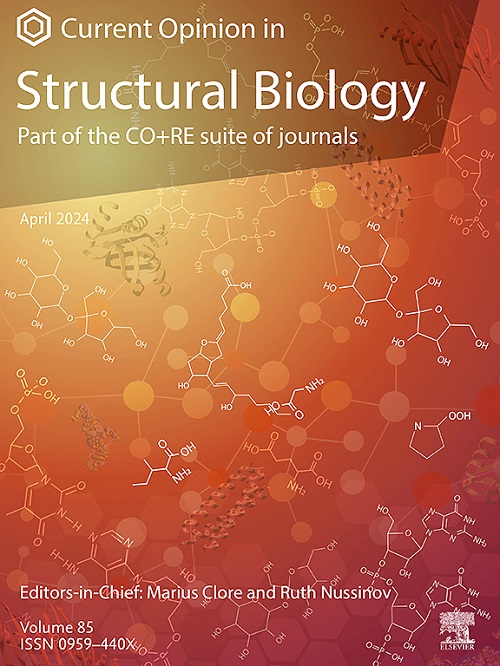Role of RNA in genome folding: It's all about affinity
IF 6.1
2区 生物学
Q1 BIOCHEMISTRY & MOLECULAR BIOLOGY
引用次数: 0
Abstract
In mammalian cells, RNA species make up ∼10% of chromatin by mass and play a structural role in the nucleus by acting as scaffolds and influencing genome organisation. Although many proteins bind nuclear RNAs, these interactions are often non-specific, making it challenging to define RNA's role in genome folding. Nonetheless, a clearer picture is emerging. Some RNAs, like NEAT1 and MALAT1, have high affinity for specific RNA-binding proteins and form the basis for nuclear bodies. In contrast, many nuclear proteins bind RNA weakly, resulting in numerous low-affinity interactions. We propose that these interactions generate a complex RNA-protein network with dynamic, gel-like properties that modulate chromatin folding and transcription factor mobility. This suggests an exciting feedback mechanism in which newly transcribed RNA contributes directly to shaping chromatin architecture.

RNA在基因组折叠中的作用:这与亲和力有关
在哺乳动物细胞中,RNA种类占染色质质量的约10%,并通过充当支架和影响基因组组织在细胞核中发挥结构作用。尽管许多蛋白质结合核RNA,但这些相互作用通常是非特异性的,这使得定义RNA在基因组折叠中的作用具有挑战性。尽管如此,一幅更清晰的图景正在浮现。一些rna,如NEAT1和MALAT1,对特定的rna结合蛋白具有高亲和力,是核体的基础。相比之下,许多核蛋白与RNA结合较弱,导致许多低亲和力相互作用。我们提出,这些相互作用产生了一个复杂的rna -蛋白网络,具有动态的凝胶样特性,可以调节染色质折叠和转录因子的迁移。这表明了一种令人兴奋的反馈机制,其中新转录的RNA直接有助于形成染色质结构。
本文章由计算机程序翻译,如有差异,请以英文原文为准。
求助全文
约1分钟内获得全文
求助全文
来源期刊

Current opinion in structural biology
生物-生化与分子生物学
CiteScore
12.20
自引率
2.90%
发文量
179
审稿时长
6-12 weeks
期刊介绍:
Current Opinion in Structural Biology (COSB) aims to stimulate scientifically grounded, interdisciplinary, multi-scale debate and exchange of ideas. It contains polished, concise and timely reviews and opinions, with particular emphasis on those articles published in the past two years. In addition to describing recent trends, the authors are encouraged to give their subjective opinion of the topics discussed.
In COSB, we help the reader by providing in a systematic manner:
1. The views of experts on current advances in their field in a clear and readable form.
2. Evaluations of the most interesting papers, annotated by experts, from the great wealth of original publications.
[...]
The subject of Structural Biology is divided into twelve themed sections, each of which is reviewed once a year. Each issue contains two sections, and the amount of space devoted to each section is related to its importance.
-Folding and Binding-
Nucleic acids and their protein complexes-
Macromolecular Machines-
Theory and Simulation-
Sequences and Topology-
New constructs and expression of proteins-
Membranes-
Engineering and Design-
Carbohydrate-protein interactions and glycosylation-
Biophysical and molecular biological methods-
Multi-protein assemblies in signalling-
Catalysis and Regulation
 求助内容:
求助内容: 应助结果提醒方式:
应助结果提醒方式:


